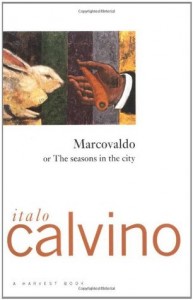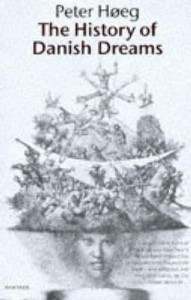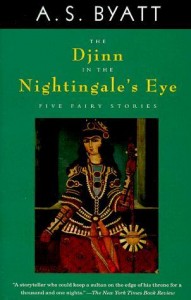There are a myriad of things that make me fall in love with a story, but a strong setting has to be at the top of the list. A literary geography is comprised not just of the landscape where the story takes place but also of people their relationships with the location. Though Fuschia Phlox’s Return to the Aegean is well plotted, the rich characters and gorgeous setting are what captured my heart.
“There is such pleasure in taking from nature what wants to be taken.” – Fuschia Phlox
PHlox reaps the natural beauty of the Greek islands and sows it into the descriptions in this novel. From olive orchards to rocky shores, I wanted to move in with Thalia as she returns to the place she once called home. While Thalia explores the mysteries of her family’s past, the reader is treated to loving descriptions of Greek rituals of life and death.
I’m not always the most careful reader, but something about Phlox’s character descriptions makes it easy to differentiate between the large number of characters in the novel. The characters are believable and I found myself wanting to befriend Irini and Petros. I felt for Mina and I loved Sophia. Each new character seemed to have his or her place in the natural order of the island.
I appreciated that as wide as the focus of characters is, the narrative always returns to swimming and the sea. In fact, the gently insistent way Phlox consistently brings the book back to the theme reminds me of Anne Michaels.
Phlox has a knack for pacing. Each chapter leaves off with a gentle prod forward that kept me reading well past my bedtime. I don’t think I’m spoiling anything if I say the end unfolds like the denouement of a 19th century novel.
“You don’t listen until you are truly ready.” – Fuschia Phlox
This was my first experience reviewing a book from a PDF and the format affected the way I read the book. Because I am used to editing my own work onscreen, I found I had difficulty getting distance from this novel. As a result, I paid more attention to nitpicky things than I normally would when reading for pleasure. For example, the (albeit few) sentences that were overwritten really stuck with me. I also got hung up on the footnotes that defined the Greek words and kept thinking about editing context clues into the text instead. It seems I’m still a few years off from being ready to go the e-reader route.
Overall, I’d say that Return to the Aegean is the perfect mixture of a vacation book and a serious novel. You may think you are wholly engrossed with the mystery, but part of you will be checking flight times on the next plane to Greece.
If this review made you want to read the book, pick up a copy of Return to the Aegean from Bookshop.org. Your purchase keeps indie booksellers in business and I receive a commission.
 I sought out Italo Calvino this morning because I wanted to learn how he creates fairytales that seem to exist very close to reality. In the fourth story of Marcovaldo, “Winter, The City Lost in the Snow,” I found what I was looking for.
I sought out Italo Calvino this morning because I wanted to learn how he creates fairytales that seem to exist very close to reality. In the fourth story of Marcovaldo, “Winter, The City Lost in the Snow,” I found what I was looking for. As the title implies, The History of Danish Dreams is dreamlike. Even more so for readers like me who have a poor knowledge of Danish history. Peter Høeg does a masterful job of hovering in the space between fable and fact where story and truth lie and though I am curious about whether there is an underlying structure of verifiable events, I will not look them up because I don’t want the spell to be broken.
As the title implies, The History of Danish Dreams is dreamlike. Even more so for readers like me who have a poor knowledge of Danish history. Peter Høeg does a masterful job of hovering in the space between fable and fact where story and truth lie and though I am curious about whether there is an underlying structure of verifiable events, I will not look them up because I don’t want the spell to be broken. Lately I’ve been drawn to fairytales and myths. Perhaps I am trying to recover an ebbing capacity for storytelling in my suddenly busy life, and perhaps I’m looking to get lost in the wonder of stories the way I did when I was a kid. Perhaps I’m missing afternoons at Louisa’s with Bob and Jack and their emphasis on the mythic journey. When I stumbled on AS Byatt’s The Djinn in the Nightingale’s Eye, I thought I wanted to read it because it spoke to the Arabian Nights, but what I fell in love with was the overall fairytale quality of the book and its five stories and what they told me about being a woman.
Lately I’ve been drawn to fairytales and myths. Perhaps I am trying to recover an ebbing capacity for storytelling in my suddenly busy life, and perhaps I’m looking to get lost in the wonder of stories the way I did when I was a kid. Perhaps I’m missing afternoons at Louisa’s with Bob and Jack and their emphasis on the mythic journey. When I stumbled on AS Byatt’s The Djinn in the Nightingale’s Eye, I thought I wanted to read it because it spoke to the Arabian Nights, but what I fell in love with was the overall fairytale quality of the book and its five stories and what they told me about being a woman. In After Rain, William Trevor presents many stories that play with the reader’s plot expectations. Often he creates a compelling, even dangerous, scenario, but then the story unfolds to reveal that the reader was watching the magician’s assistant rather than his hands. Whether the crooks are the protagonists or the antagonists, the result is always the same: Trevor pulls the rabbit from the hat as we expected in the first place, presenting the triumph of conventionality.
In After Rain, William Trevor presents many stories that play with the reader’s plot expectations. Often he creates a compelling, even dangerous, scenario, but then the story unfolds to reveal that the reader was watching the magician’s assistant rather than his hands. Whether the crooks are the protagonists or the antagonists, the result is always the same: Trevor pulls the rabbit from the hat as we expected in the first place, presenting the triumph of conventionality.